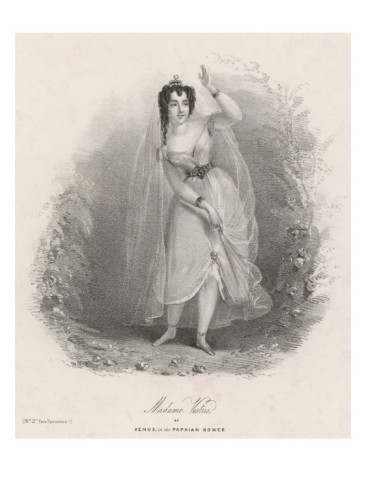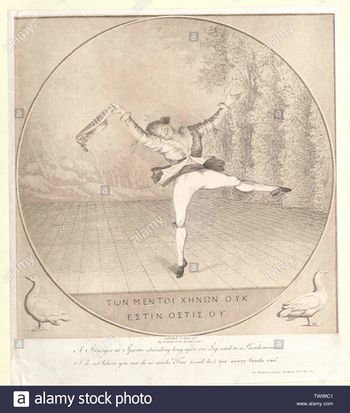Annotation:Vestris' Gavotte
X:1 T:Vestris' Gavotte M:2/4 L:1/8 B:Thomas Wilson - Companion to the Ball Room (1816, p. 171) Z:AK/Fiddler's Companion K:A A2A2|A3 B/c/|dcBA|{A}GFGE|A2A2|A3 B/c/| BAGF|E4||B2 dB|G2G2|A2 cA|E2E2| B2 dB|G2G2|A2 cA|E2E2|DGBG|dBGE| A2A2|A3 z||d2d2|d3 e/f/|=gfed| {d}cBcA|d2d2|d3 e/f/|edcB|A4|| e2 =ge|c2c2|d2 fd|A2A2|e2 =ge|dc c2| d2 fd|A2A2|Acec|=gecA|d2d2|d3 z!D.C.!||
VESTRIS' GAVOTTE. English, Country Dance Tune (2/4 time). A Major. Standard tuning (fiddle). ABCD. The title refers to one of three members of the Vestris family of dancers, the most interesting of whom is Wikipedia:Lucia_Elizabeth_Vestris (1797–1856, nee Bartolozzi) was an Italian actress and a contralto opera singer, who regularly graced the London stage as well as Continental venues. London dancing master Thomas Wilson published the tune only a year after she became the toast of London and Paris after her first leading role at age 18 in Italian opera in the title-role of Peter Winter's II ratto di Proserpina at the King's Theatre in 1815. There were several Vestris's on the stage in the latter 18th and 19th centuries: Lucia was married at age 16 to French ballet dancer and choreographer Armand Vestris (1788?-1825), who settled in London in 1809 and who met Lucia when she was a singer at the London opera. He was the son of dancer Auguste Vestris, and grandson of Gaétan Vestris, both famous dancers in Paris.


A Stranger at Sparta standing long upon one Leg, said to a Lace daemonian,
I do not believe you can do as much; 'True (said he) but every Goose can'.

